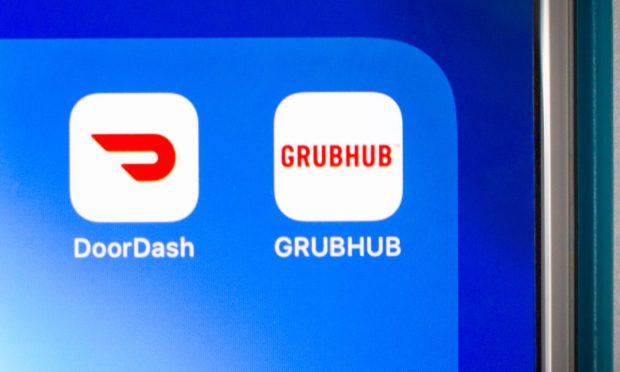DoorDash and Grubhub Race To Offer Restaurants the Most Flexible Fulfillment

When online delivery orders made up only a small fraction of all sales, the turnkey solution was the best option for most restaurants. Third-party aggregators gave them access to digital order-taking and payment tools and drivers to fulfill delivery orders, as well as a marketplace for new customer acquisition. Now, however, as the online ordering space has evolved, so have restaurants’ needs. One restaurant might, say, need to be discoverable on the marketplace but have its own delivery drivers, while another might only need the order-taking tools.
Noting this shift, major delivery services are racing to meet these changing needs. On Wednesday (Nov. 10), DoorDash announced that it is integrating flexible fulfillment into its Self-Delivery product.
“As the restaurant industry faces new and prolonged challenges resulting from the COVID-19 pandemic, we have continued to listen to our restaurant partners,” the company said in a blog post. “Two of the biggest takeaways we heard are wanting more flexibility and requesting additional assistance to remedy staffing concerns.”
The feature allows restaurants to utilize either DoorDash’s drivers or their own delivery staff depending on their needs at that moment or depending on set criteria such as daypart or delivery radius.
Also Wednesday, Grubhub announced a feature that does effectively the same thing. The Just Eat Takeaway-owned aggregator’s new Supplemental Delivery allows restaurants utilizing the company’s self-delivery option to supplement their drivers with Grubhub’s, enabling them to expand their delivery radii.
“We’re always looking for ways to better serve our restaurant partners and drive them more orders, which is exactly why we’re offering Supplemental Delivery,” Kevin Kearns, senior vice president of restaurants at Grubhub, said in a statement. “Knowing that many operators are struggling with staffing right now, we’re proud to offer this additional support to restaurants on Grubhub and allow them to continue focusing on their operations, while acquiring more diners and capitalizing on previously untapped business.”
Research in PYMNTS’ study entitled The Bring-It-To-Me Economy: How Online Marketplaces And Aggregators Drive Omnichannel Commerce, created in collaboration with Carat from Fiserv, which featured a survey of more than 5,200 U.S. consumers about how their shopping habits have changed since the start of the pandemic, found that 58% of consumers are ordering restaurant food online more often than prior to March 2020.
See also: Bring-It-To-Me Economy Ascends As Consumers Embrace Home-Centric Lifestyles
Additionally, the study also found that 46% of consumers are ordering food from restaurants using aggregator services more than they were before the start of the pandemic. Similarly, according to data from PYMNTS’ 2021 Restaurant Readiness Index, created in collaboration with Paytronix, 18% of restaurants’ sales now come through third-party aggregators.
Read more: QSRs’ Lagging Loyalty-Reward Investment Hurts Innovation and Sales
These new features come amid a broader restaurant technology trend of providing more flexibility so that restaurants can choose in real time what products and services make the most sense for their businesses.
“In the next five years, as a restaurateur, you’ll be able to choose the type of currencies you accept … you’ll be able to issue NFTs that represent your brand and create unique membership models … and you’ll be able to choose your logistics provider, whether that’s a local delivery outfit or a national logistics provider,” Steve Simoni, CEO of contactless ordering and payment technology provider Bbot, predicted in a recent interview with PYMNTS. “That choose-your-own-adventure is the trend right now, and that’s why it’s more important than ever for system integrators to get it right.”
Related news: Growth of Ghost Kitchens Threatened by Outdated Digital Payment Tech
